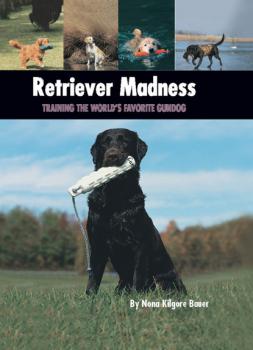MREADZ.COM - много разных книг на любой вкус
Скачивание или чтение онлайн электронных книг.Scania 113 and 143 at Work
Patrick Dyer's ninth book in the 'at work' series marks a return to Scania to study the 3-series trucks produced between 1988 and 1996, with the emphasis on the 113 and 143 models. In much the same way as these trucks evolved from the previous 2-series and LB (1-series) so too does the book, taking the story forward from the previous titles covering those ranges.For Scania, masters of the modular system and evolutionary engineering processes, the 3-series represented the pinnacle of development for designs born decades earlier. Industry recognition of its achievement came early with the range being awarded the Truck of the Year title in 1989.With over 200 photographs provided by the manufacturer and enthusiasts, Scania 113 & 143 at Work charts the story of the 3-series through informative text in the popular and familiar style of previous 'at work' titles from the same author.
Savannah and Grassland Monitors
Monitors are among the most popular lizards kept in captivity, and this colorful guide provides information on the two most commonly seen species, savannah monitors and grassland monitors. Due to the intelligence and relative easy care needs of these lizards, they are favored by beginning herpetoculturists, though great emphasis must be placed on responsible ownership of these beautiful, but delicate animals. Savannah & Grassland Monitors, written by lizard expert Robert George Sprackland, PhD, provides guidelines for keepers who wish to add a monitor to their vivarium. The chapter called “Taxonomy” gives an excellent summary of monitor species, including the African species, of which the savannah (or Bosc’s) monitor and white-throat monitor are examples, and the Asian species,including the Komodo dragon and the Argus, Bengal, Indian, and gold monitors. This Advanced Vivarium Systems title includes information about selecting a healthy example of the selected species, quarantine and acclimation considerations, handling, housing needs, water and feeding, as well as solid advice about keeping monitors healthy and thriving. A separate chapter on diseases and disorders provides a complete primer on the health needs and veterinary care of these rewarding reptiles.
Samoyed
The experts at Kennel Club Books present the world's largest series of breed-specific canine care books. Each critically acclaimed Comprehensive Owner's Guide covers everything from breed standards to behavior, from training to health and nutrition. WIth nearly 200 titles in print, this series is sure to please the fancier of even the rarest breed!
Saluki
The graceful, noble Saluki holds the distinction of being the most ancient pure-bred dog on earth, predating Christ by hundreds of years.
Rottweiler
The experts at Kennel Club Books presents the world's largest series of breed-specific canine care books. Each critically acclaimed Comprehensive Owner's Guide covers everything from breed standards to behavior, from training to health and nutrition. With nearly 200 titles in print, this series is sure to please the fancier of even the rarest breed.
Rottweiler
Dedicated to the noble and versatile Rottweiler, a breed esteemed for its strength, agility, and friendly demeanor, this Smart Owner’s Guide, created by the editors at Dog Fancy magazine, offers the most up-to-date and accurate information every dog owner needs to become a well-informed caregiver for his dog. Illustrated with color photographs of adorable puppies and handsome adults, this easy-to-read primer is designed in a modern, lively manner that readers will find user-friendly and entertaining.Each Smart Owner’s Guide offers a description of the breed’s character and physical conformation, historical overview, and its attributes as a companion dog. The reader will find informative chapters on everything he or she needs to know about acquiring, raising, and training this remarkable purebred dog, including: finding a breeder and selecting a healthy, sound puppy; preparing for the puppy’s homecoming, shopping for supplies, and puppy-proofing the home; house-training; veterinary and home health maintenance; feeding and nutrition; and grooming. Obedience training for basic cues (sit, stay, heel, come, etc.) and solving potential problem behaviors (barking, chewing, aggression, jumping up, etc.) are addressed in separate chapters, as are activities to enjoy with the dog, including showing, agility, therapy work, and more.Entertaining tidbits and smart advice fill up colorful sidebars in every chapter, which the editors call “It’s a Fact,” “Smart Tip,” “Notable & Quotable,” and “Did You Know?” Real-life heroes and rescue stories are retold in full-page features called “Pop Pups” and “True Tails.” Recipes, training, and care tips are highlighted in the “Try This” feature pages.The Smart Owner’s Guide series is the only series that offers readers an online component in which dog owners can join a breed-specific online club hosted by dogchannel.com. At Club Rottie, owners of the breed can find forums, blogs, and profiles to connect with other breed owners, as well as charts and checklists that can be downloaded. More than just 20,000 pages of solid information, there’s a host of fun to be had at the club in the form of downloadable breed-specific e-cards, screensavers, games, and quizzes.The Resources section of the book includes contact information for breed-related organizations and rescues, as well as practical guidance on traveling with dogs, identification, and locating qualified professionals to assist the dog owner, such as pet sitters, trainers, and boarding facilities. This information-packed Smart Owner’s Guide is fully indexed.
Robert Walker Haulage Ltd: The History of the UK's Largest Fork Truck Transport Company
This book tells the story of Robert Walker Haulage. Established in 1935, Robert Walker never intended to run a haulage business; he initially bought a lorry to carry the produce from his market garden to the local markets. He then branched out into other types of transport work including carrying prisoners of war! Later, his forward thinking sons Brian and Eric saw a niche market in the transport of fork lift trucks and decided to try converting an old R.A.F. trailer into an early fork lift truck carrier. Today the company is in the hands of the third and fourth generations of the family and despite its humble beginnings, it is now the largest fork truck transporter in the UK. The book details the history of the company's success including anecdotes from people that have worked for or with the company over the years. It details how Walkers carried Donald Campbell's Bluebird around on his exhibition tour of 1965 after setting his land speed records between 1955 and 1964, and shows how ERF played a major role in the expansion of the fork truck transport business. Including 229 previously un-printed pictures of the four wheel basic lorries that Robert used in the early days, to the latest vehicles operated by this specialist haulier, this book will be of interest to truck drivers and other transport enthusiasts.
Rhodesian Ridgeback
The experts at Kennel Club Books present the world's largest series of breed-specific canine care books. Each critically acclaimed Comprehensive Owner's Guide covers everything from breed standards to behavior, from training to health and nutrition. With nearly 200 titles in print, this series is sure to please the fancier of even the rarest breed!
Retriever Madness
Author Nona Kilgore Bauer begins Retriever Madness with a chapter called “Know Your Retrievers,” and few know their retrievers like this expert author, trainer, and breeder. Bauer introduces the readers to the six retrievers recognized by the American Kennel Club, among them two of the most popular companion dogs in the world, the Labrador Retriever and the Golden Retriever, along with other superb overachievers: the Chesapeake Bay Retriever, Flat-Coated Retriever, Curly-Coated Retriever, and Nova Scotia Duck Tolling Retriever.Geared toward readers who are interested in working with their retrievers in their bred-for capacity—hunting water fowl and upland game birds—Retriever Madness is the perfect primer to getting started in the field. The book offers advice on selecting a puppy with hunting potential, giving future owners insight on how to evaluate a puppy’s birdiness, independence, prey drive, and personality. The chapter on bringing the puppy home gives recommendations for basic training equipment, including leashes, collars, dummies, whistles, starting pistol and the like.Amateur retriever owners who hope to hunt with their dogs will find excellent advice for training for the puppy’s first twenty weeks of life, the most critical period for training any puppy. In addition to the basic commands (sit, down, stay), the author also explains the release command, whistle commands, forward and backward heeling, and wait.Four chapters are devoted to beginning field work, presenting diagrams and step-by-step instructions and covering such topics as puppy marks, throwing, water retrieves, steadying, force-fetching, marking, executing blind retrieves and more. The author offers remedies to commonly encountered problems in the field as well as a complete glossary of terminology that all readers will find helpful in understanding the lingo of the field retriever.
Reporting for Duty
Hundreds of thousands of military veterans seek treatment for post-traumatic stress disorder (PTSD) each year. Service dogs have been used for many years in the civilian sector to help their disabled owners perform necessary tasks in daily life; likewise, the organized use of therapy dogs to bring comfort and companionship to hospital and nursing-home patients dates back more than four decades. Reporting for Duty explores the unique and special bond between wounded warriors—especially those suffering from PTSD—and their service dogs and discusses the vital work of therapy dogs who visit VA hospitals and military rehabilitation facilities.Author Tracy Libby tells the true stories of disabled veterans who have been touched, assisted, and enriched by the dogs in their lives, and the new lease on life is reciprocal: many of these service and therapy dogs have been rescued from shelters and specially trained for their jobs. A portion of proceeds from the sale of this book will benefit a veterans’ service-dog organization.INSIDE REPORTING FOR DUTY:•True stories of physically and mentally disabled veterans who count on service dogs for assistance with daily tasks.•An explanation of PTSD and how it affects military veterans.•How therapy dogs and service dogs are selected and trained for their jobs.•Rescuing shelter dogs to train for therapy and service work.•How the military is training dogs to accompany soldiers on deployments.•A look at the bond between people and dogs and the positive effects it has on both









